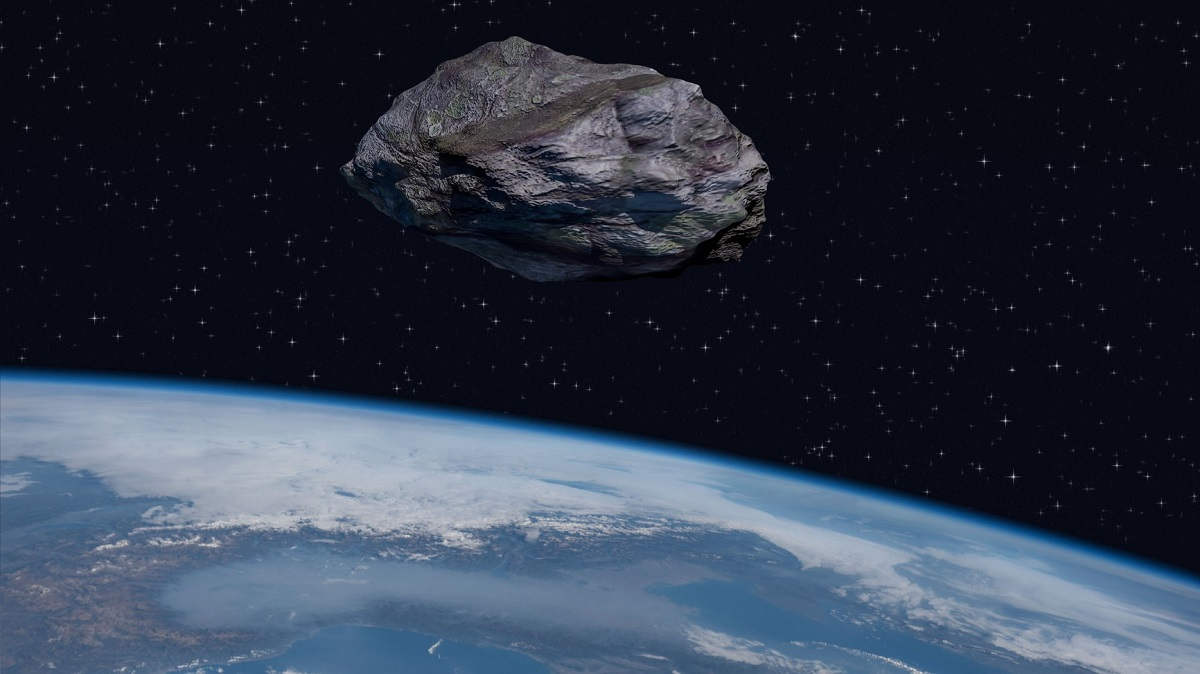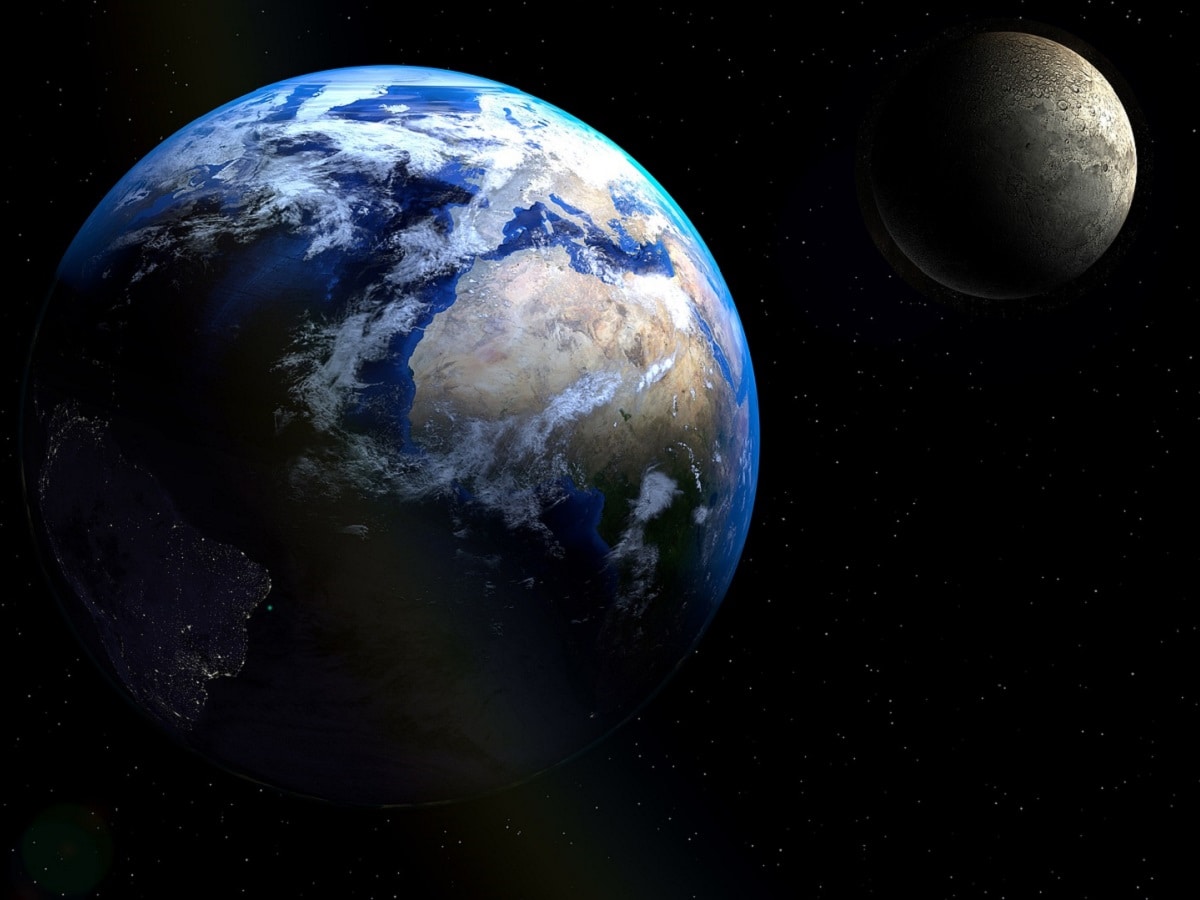Astronomers have found an asteroid tagging along with Earth on our yearly journey around the sun, making it a newly discovered “quasi-moon.”
The asteroid measures about 15 to 20 metres in diameter, or about the length of a semi-trailer. It is approximately 14 million kilometres from Earth – nearly 40 times further from Earth than the Moon.
The “quasi-moon” was first spotted on March 28 by the Pan-STARRS survey telescope on the dormant Haleakalā volcano located on Hawai‘ian island Maui.

Artwork of an asteroid above Earth. Credit: Tokarsky / iStock / Getty Images Plus.
Now called 2023 FW13, the object travels around the sun at the same rate as Earth while also circling our planet. Unlike a true moon, quasi-satellites are caught in a synchronised orbit around a planet, but it doesn’t orbit the planet in a simple, closed path. Its orbit is complex and loops around the planet, but also moves away from it.
Models suggest that the object – which has probably been accompanying our planet for 2,100 years – will stick around for hundreds more before shooting off into space.
Adrien Coffinet, a PhD candidate in astronomy at the University of Geneva, was the first to identify the object.

Some astronomers say that, since Earth plays very little role in the asteroid’s motion, it might not even be correct to call it a “quasi-satellite.” Alan Harris, a senior research scientist at the non-profit Space Science Institute based in Colorado, tells Sky & Telescope: “The dimension of the loop is so large that Earth plays essentially no role in its motion. [It’s] in no way associated with Earth other than by chance.”
In a bit of good news, it doesn’t appear that there is any danger that 2023 FW13 is on a collision course with Earth.





